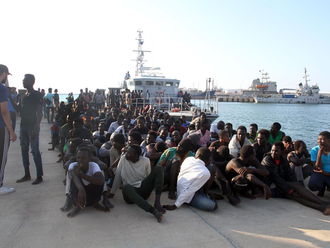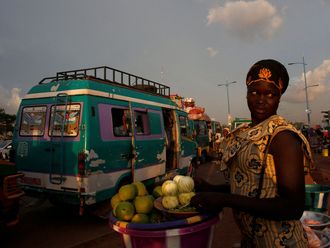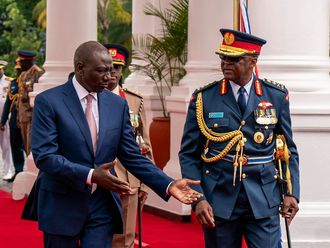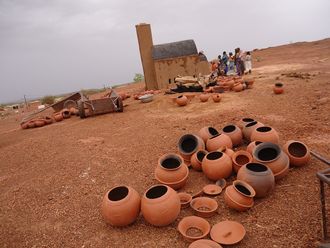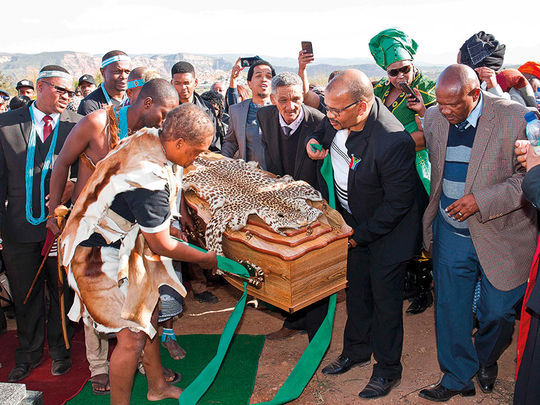
HANKEY, South Africa: South Africa buried the “spirit” of one of its first rebel leaders on Friday, 200 years after his death in Australia, where his bones were never found.
A traditional ritual was performed by indigenous elders to bring Khoi San chief Dawid Stuurman’s spirit home, and a coffin symbolically carrying the spirit was buried on Friday in his rural hometown of southern Hankey.
Stuurman, the last Khoi San chief, resisted British colonial rule so was jailed at Robben Island from where he escaped three times before being sent to Australia in a convict ship to serve his term.
He died in Sydney in 1830 and is believed to have been buried under the Sydney Harbour Bridge.
But efforts to recover his remains were fruitless, forcing authorities to resort to so-called spiritual repatriation.
A noisy crowd of 300 people, wearing traditional Khoi San and Xhosa clothing, converged behind a Hankey school in Eastern Cape province to witness the unveiling of the tombstone and the reburial of the spirit.
Khoi San men in headgear made from lion or leopard tails and wearing lion skin shawls, led the ceremony.
After song and dance, as well as the chanting of revolutionary poetry, the wooden coffin draped in leopard skin was lowered into the grave.
A clergyman sprinkled water over it using an ox-tail.
Described as the “last chief of the Hottentots” in eulogies, Stuurman was buried a few hundred metres from a Khoisan heroine, Saartjie Baartman.
Known as Africa’s “Hottentot Venus”, she was paraded in circuses in 19th century Europe like a sexual freak because of her large buttocks and genitals.
Stuurman died in Australia and was buried under the Sydney Harbour bridge, Khoi traditional chief Joseph Kreeling, said on Friday.
“We are here to celebrate and commemorate the life of a fearless, bold Khoi San hero,” said Kreeling.
“This closes a chapter which used to bother the Khoi San people. We are very happy our great, great grandfather is here today with us,” said Chief Kreeling.
Stuurman was born in 1773 in the Gamtoos River Valley in the Eastern Cape.
His activism started over conflict with his farm owner boss, Johan Vermaark. Unhappy with the way blacks were treated by whites, he organised his people and rebelled against the establishment.
At one point Vermaark tied him to a cart, brutally whipped him, sprinkled salt on his open wounds and left him in the sun to dry, according to the eulogy read at the graveside.
“It’s an emotional day for all South Africans, but most important for the Khoisan people,” said Christian Martin, a Khoi activist and senior politician in the ruling ANC party.
Martin was part of an eight-man delegation which travelled to Australia this week to repatriate Stuurman’s spirit.
In 2013 Martin vowed not to cut his hair until Stuurman’s remains or spirit were brought home. On Friday he knelt on the dusty ground next to the grave as traditional leaders and politicians took turns to shave off his dreadlocks.
Four white doves were set free at the gravesite as a sign of peace.


